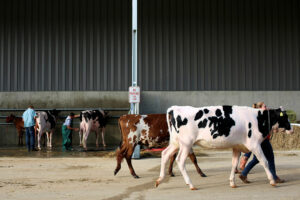
Dairy imports expected to grow next year
PHILIPPINE DAIRY imports are expected to increase in 2025 due to strong domestic demand, according to the US Department of Agriculture (USDA).
In a report, the USDA said overall dairy imports are forecast to rise to 3.1 million metric tons (MMT) in liquid milk equivalent for 2025 from 3.05 MMT this year, mainly due to increased shipments of skim milk powder.
The Philippines typically imports dairy products such as ready-to-drink milk, cheese, skim milk powder, and whole milk powder.
The Philippines typically imports 99% of its dairy requirements as domestic production cannot meet demand.
The USDA said that the Philippines sources its requirements mainly from the US and New Zealand, followed by Indonesia, Australia, and Denmark.
“Dairy products continue to be the third largest US agricultural export to the Philippines after soybean meal and wheat, in value terms,” it added.
The USDA said that imports of skim milk powder are expected to grow 3% to 160,000 MT.
“An expected decline in import price will encourage manufacturers to produce more packaged dairy products to serve increasing demand,” it added.
The US and New Zealand are among the top suppliers of skim milk powder to the Philippines.
Imports of ready-to-drink milk and whole milk powder are forecast to remain flat in 2025. On the other hand, cheese imports are expected to decline next year due to higher import prices.
Meanwhile, dairy production is projected at 33,000 MT in 2025, due to an increase in the dairy herd as the government pursues dairy industry development projects.
The National Dairy Authority (NDA) said it is planning to import dairy cattle for its stock farms to support its plans to expand domestic production.
The NDA said that the new stock farms will eventually help increase the domestic dairy herd to about 80,000 head.
The NDA aims to increase dairy production to 80 million liters per year by 2028, equivalent to about 5% of milk demand.
“Production growth has been slow in previous years because of the inability to increase the dairy herd, mostly due to insufficient funding and little investment from the private sector,” the USDA said.
The USDA added that consumption is expected to hit three MMT by 2025, driven by increased population. — Adrian H. Halili



